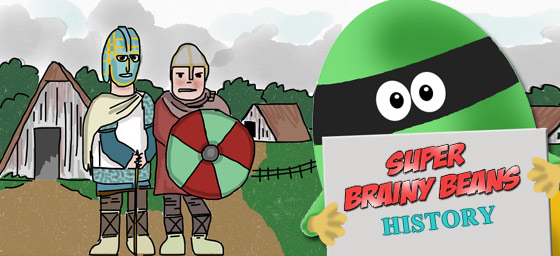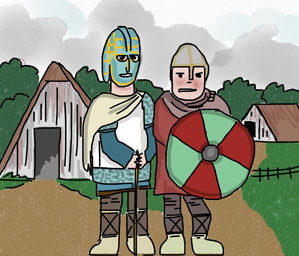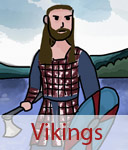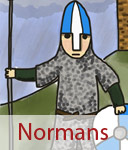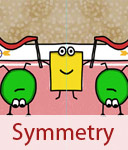Anglo Saxon for kids
Anglo Saxon for kids learning KS2 at Primary School. Homework help with Saxon life and Alfred the Great.
Time: 500AD - 1100AD
Who were the Anglo Saxons?
At about the year 400 tribes of Angles, Saxons and Jutes from Denmark and northern Germany arrived in Britain. They were known as the Anglo-Saxons.
The Saxons lived in villages which some of them grew bigger into towns. England was divided into seven kingdoms which had a ruler, a warrior king.
 BBC Bitesize - Anglo-Saxons
BBC Bitesize - Anglo-SaxonsCartoons explaining the History of the Anglo-Saxons and when they came to Britain.
 The School Run - Anglo-Saxons
The School Run - Anglo-SaxonsTop 10 facts of the Anglo-Saxon period. Found out who the Anglo-Saxons were and explore their timeline.
Who was Alfred the Great?
Around 800, Vikings invaded England and took control of six of the kingdoms. King Alfred of Wessex, leader of the remaining kingdom and known as Alfred the Great, drove the Vikings out and won back three more kingdoms. He then agreed that the Vikings could settle in the eastern part of England. He went on to set up strong, walled towns and set up a navy. He brought art, religion, learning and fair laws to his people.
The Vikings invaded the Saxons again and for 30 years they ruled before the Saxons took it back from them.
 DK Find out - Anglo-Saxons
DK Find out - Anglo-SaxonsExplore Anglo Saxon objects.
What happened to the Anglo Saxons?
In 1042 Edward the Confessor was now King of England. He died in 1066 and Harold Earl of Wessex became king. But Edward the Confessor made a promise to Duke William of Normandy (northern France) and he thought he should be king. So in 1066 William sailed to England and fought King Harold at the Battle of Hastings. The Normans won, and King Harold was killed. This was the end of the Saxons and the beginning of the Normans.

